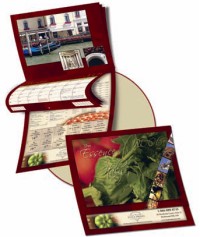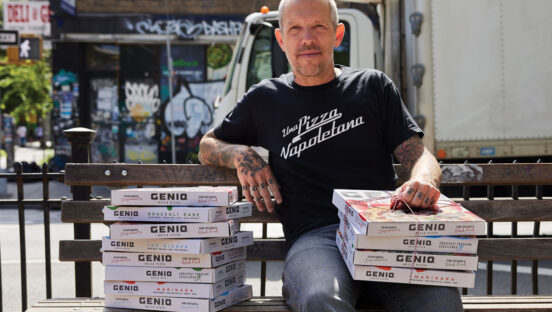Strategy #155
A Picture Is Worth A Thousand Words
You might have noticed that the poster in your window seems to draw as many people into your store as the ad you put in last week's newspaper, or that your menu items with accompanying photographs have a higher sale rate in your restaurant.
Because most people shop visually, especially with food, appealing to their appetite through the use of pictures sells more products. Yes, this brings up the old saying, 'A picture is worth a 1000 words.' Menus, flyers, posters and any printed marketing materials you send to your potential customers must have mouth-watering images for you to get the best results.
Your customers are looking for quality and a competitive price, but that does not mean you have to offer your products at the cheapest price to get them to order. Show your customers the quality of your menu offering. As an independent operator, you pride yourself on having better quality ingredients in your products; get that message out there.
The largest segment of the marketplace today is the baby boomers. They are looking for higher quality products and are willing to pay a little more knowing they are buying quality. If the promotional pieces in your restaurant show how savory your pizzas are, then posters, menus and magnets can do most of your selling for you, provided you have the right photography.
To give you an example of how photography can help your pizzeria, a 100-unit pizza chain used glowing photos to increase their sales. The pizzeria had a better quality product than the discounting competitors and rightfully priced their food a bit higher. However, they were still producing marketing materials that were based on discounting, rather than sticking to their prices. Once they focused on marketing the quality of their food using photographs, they increased not only their overall sales, but also their guest check average and customer counts, all while sticking to their original prices.
CFM Concepts offers a full range of food photography – professionally taken to maximize the visual appeal of each food item. Bill Milne, food photographer and partner at CFM, is a photographer and image-maker based in Manhattan. His works have appeared in several publications including: The New Yorker, TIME Magazine, The L.A. Times, The Toronto Globe & Mail and USA Today, among many others.
Their photography can be ordered on just about anything, including posters, menus, magnets, door hangers, box toppers, postcards and even signs. They know how to make each picture work for your pizzeria, ensuring that you get the most for your money. With any order, you can choose from hundreds of food shots from their photo library at no charge to you or you can pay to have Bill come to your pizzeria to take mouth-watering shots of your own food.
For pricing and to learn more about CFM Concepts, visit them at www.cfmconcepts.com or give them a call at 866-439-4030.
Strategy #156
Keeping Your Crust Crispy
Every pizzeria does their best to put out some form of a great pizza. Several years ago, in order to both increase sales and compete in the market, many pizzerias began offering delivery to their customers. What makes the difference in a decent and a great delivered pizza is the form in which it arrives.
Steam and grease work together to reduce the tastiness of a delivered pizza. Most pies sit in their own grease, becoming messy and soggy before ever making it to your customer's door. Sure, some products are on the market that are supposed to help fight the sogginess prevalent in delivered pies, but only work part of the time. Things like corrugated cardboard slips to put in the bottom of pizza boxes have been around for years. Problems with corrugated cardboard are obvious. For one thing, many pizzas actually absorb the taste of the cardboard. To combat this, some pizzerias have started using wax paper, which only holds the moisture and grease to be reabsorbed by the crust. Innovations in box designs allow steam to escape through carefully placed vent holes in the boxes, but do not do much to help the bottom of your pie.
However, to really cut down on extra moisture in your delivery box, a product like Dri Pie is your best option. Dri Pie is a plastic grid that you put in the bottom of your box (instead of the corrugated cardboard piece). The grid allows the pizza juices to seep from the pizza into the box below without soaking your crust in the mess. Dri Pie helps soothe the fears of those who refuse to deliver their pizzas because of quality issues and allows them to deliver with much more confidence. With the issue of soggy pizzas lessened, feel free to add delivery to your menu and be sure that your pizza will represent you well away from your shop. Cutting the pizza in the box won't damage the Dri Pie, so there are no worries about pieces of the grid getting lodged into the pizza. They can, however, be easily cut with a pair of scissors to ensure the best possible fit for your pizza boxes.
The bio-degradable, FDA approved mats come in three different sizes to ensure the proper fit for your pizza boxes. The most popular and largest is 12 inches by 16 inches, followed by a middle size at 12 inches by 12 inches and the smallest size at 9 inches by 9 inches. For more information on Dri-Pie or to check on prices, check out their website at www.dripie.com or call Ken Mull at 203-723-1514.















